Hello FACNM community!
We’ve been fortunate here in New Mexico these past few weeks to have gotten some good precipitation from these recent monsoons! Although it sometimes seems that the Western U.S. bears the brunt of the impacts from fire, wildfires are a major issue in many countries across the world. This month alone, 1,500 people have been evacuated from their homes in Sardinia, British Columbia declared a state of emergency as the 300 fires burning in the region destroyed the Canadian village of Lytton and First Nations communities, and the “coldest city in the world” in Siberia has been choked with smoke. While this global problem can feel overwhelming at times, there are efforts being made around the world to prevent and fight wildfires.
This Wildfire Wednesday features information on:
How some countries are addressing wildfires around the globe
Global fire maps
A global perspective on wildfire risk management
Our upcoming FACNM member workshop
Have a great week!
Liz
Fighting wildfires around the globe
Wildfires are a major problem for countries all over the world. In 2020, the Western US, Brazil, Russian Siberia, Indonesia, Australia all experienced some of their most severe wildfire seasons to date. Countries around the world are expanding their wildfire prevention and fighting capacities to address this issue, continue reading to learn more!
Israel
Photo Credit: Gershon Elinson/Flash90
Israel is employing a combination of low-tech fire prevention (“grazing herds of goats, cows and sheep to create protective firebreaks”) and high-tech fire fighting (drones, laser beams, soil moisture and air quality sensors) to minimize the occurrence of and impacts from wildfires. Click here to learn more about the 13 ways Israel is helping the world fight forest fires.
Australia
Photo Credit: Jeremy McMahon
Australia’s 2020 devastating wildfire season grabbed global attention as over 46 million acres were burned across the country. One incredible aspect of their firefighting efforts is the 72,000 Australian civilians who made up the world’s largest volunteer fire service. Many of these volunteers put their lives and businesses on hold to continuously fight fires for months at a time with no compensation for their work. Click here to read more about this heroic Australian volunteer firefighting force known as the “firies”
Zambia
To protect the wilderness within Zambia, The Nature Conservancy is offering prescribed burn trainings to local communities and parks. Click here to read more or watch the video below!
Global fire map
Example of the global fire map from NASA, July 2018
Click here to check out this map from NASA to see where fire has occurred across the globe over the past 20 years (most recent data is April 2021).
“The fire maps show the locations of actively burning fires around the world on a monthly basis, based on observations from the Moderate Resolution Imaging Spectroradiometer (MODIS) on NASA's Terra satellite. The colors are based on a count of the number (not size) of fires observed within a 1,000-square-kilometer area. White pixels show the high end of the count — as many as 30 fires in a 1,000-square-kilometer area per day. Orange pixels show as many as 10 fires, while red areas show as few as 1 fire per day.”
Global perspective on managing wildfire risk
“In The Burning Issue: Managing Wildfire Risk, Marsh & McLennan Insights examines the global outlook for wildfire risk in the context of climate change and urban expansions into fire-prone wildlands. The report addresses the total cost of wildfires as well as the drivers of wildfire risk and the outlook in key regions of the world. It concludes with a series of recommendations for how wildfire risk can be managed.”
Upcoming member event
Did you know that FACNM members have access to resources and events such as our upcoming workshop on August 20th? To join the FACNM network, visit our website, click on the “add” button and enter your email and information.




